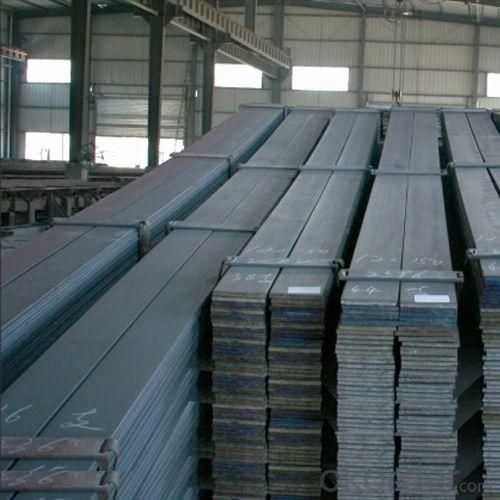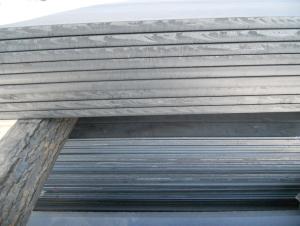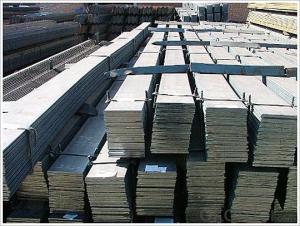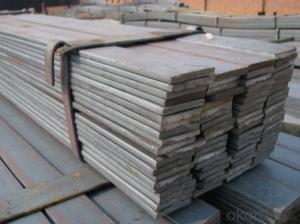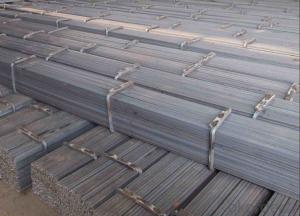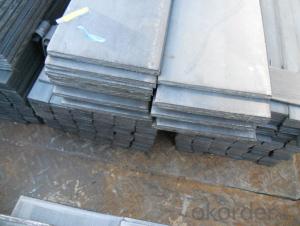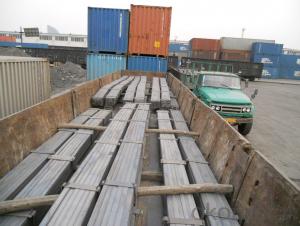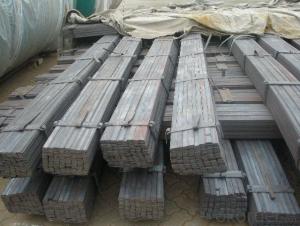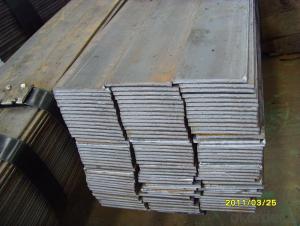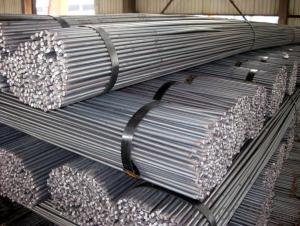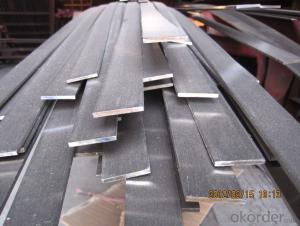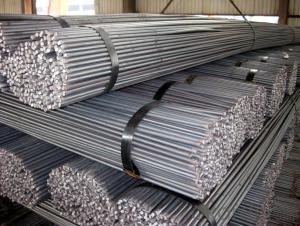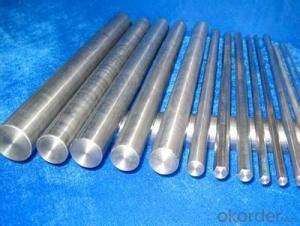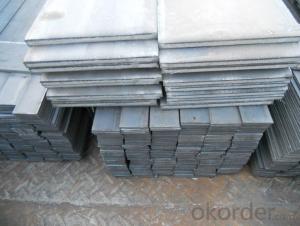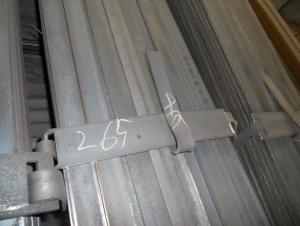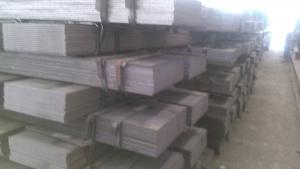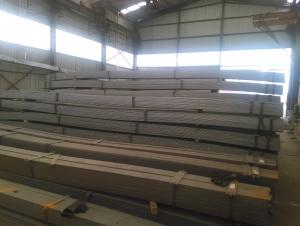Wide Flat Bar Q235 High Quality 3MM-30MM Hot Rolled
- Loading Port:
- Shanghai
- Payment Terms:
- TT or LC
- Min Order Qty:
- 25 m.t.
- Supply Capability:
- 10000 m.t./month
OKorder Service Pledge
OKorder Financial Service
You Might Also Like
Product Applications:
Q235 High Quality Wide Flat Bar 3MM-30MM Hot Rolledare ideal for structural applications and are widely used in the construction of buildings and bridges, and the manufacturing, petrochemical, and transportation industries.
Product Advantages:
Q235 High Quality Wide Flat Bar 3MM-30MM Hot Rolled are durable, strong, and resist corrosion.
Main Product Features:
· Premium quality
· Prompt delivery & seaworthy packing (30 days after receiving deposit)
· Corrosion resistance
· Can be recycled and reused
· Mill test certification
· Professional Service
· Competitive pricing
Product Specifications:
Manufacture: Hot rolled
Grade: Q195 – 235
Certificates: ISO, SGS, BV, CIQ
Length: 6m – 12m, as per customer request
Packaging: Export packing, nude packing, bundled
Commodity: Mild Steel Flat Bar Standard: GB;JIS Material: Q195-235;SS400 Brand name: FLATSPACE Origin place: China Thickness: 3mm-30mm Width:20mm-200mm Length: Max 12m Certification: SGS/BV Chemical composition of Q235
Physical properties of Q235
| ||||||||||||||||||||||||||||||||||||||||||||||||||||||||||||||||||||||||||
FAQ:
Q1: Why buy Materials & Equipment from OKorder.com?
A1: All products offered byOKorder.com are carefully selected from China's most reliable manufacturing enterprises. Through its ISO certifications, OKorder.com adheres to the highest standards and a commitment to supply chain safety and customer satisfaction.
Q2: How do we guarantee the quality of our products?
A2: We have established an advanced quality management system which conducts strict quality tests at every step, from raw materials to the final product. At the same time, we provide extensive follow-up service assurances as required.
Q3: How soon can we receive the product after purchase?
A3: Within three days of placing an order, we will begin production. The specific shipping date is dependent upon international and government factors, but is typically 7 to 10 workdays.
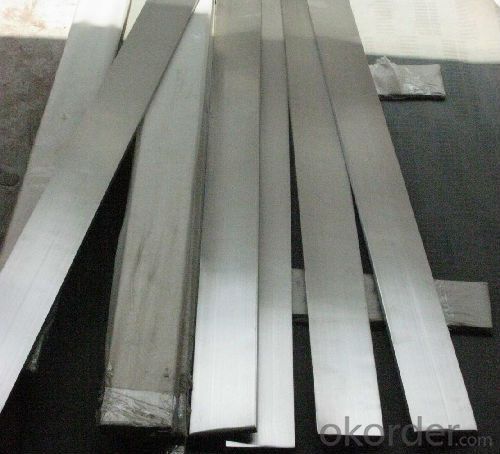

- Q: What are the load-bearing capacities of steel flat bars?
- The load-bearing capacities of steel flat bars vary depending on their dimensions and specific grades. Generally, steel flat bars have high strength and can support significant amounts of weight. However, it is essential to consult the manufacturer's specifications or engineering guidelines to determine the precise load-bearing capacity for a specific steel flat bar.
- Q: Can steel flat bars be used for making machinery frames?
- Yes, steel flat bars can be used for making machinery frames. Steel flat bars are often used in construction and engineering applications due to their strength, durability, and versatility. They provide a stable and rigid structure, making them suitable for supporting heavy machinery and equipment.
- Q: Are steel flat bars suitable for outdoor applications?
- Yes, steel flat bars are suitable for outdoor applications. They are known for their durability, strength, and resistance to corrosion, making them ideal for various outdoor uses such as construction, fencing, and landscaping.
- Q: Do steel flat bars have rounded edges or sharp edges?
- Steel flat bars typically have sharp edges.
- Q: Are steel flat bars resistant to impact or vibration?
- Known for their high strength and durability, steel flat bars exhibit a remarkable resistance to both impact and vibration. This is attributed to the composition of steel and its structural integrity, allowing it to effectively absorb and distribute energy resulting from impacts or vibrations. Consequently, steel flat bars are highly suitable for a wide range of applications in construction, automotive, and industrial sectors where resistance to impact or vibration is of utmost importance. Moreover, the ability of steel to withstand impacts and vibrations ensures the prolonged lifespan of structures and components, mitigating the potential risks of damage or failure.
- Q: How do steel flat bars perform in terms of chemical resistance?
- Steel flat bars generally have good chemical resistance, especially when compared to other materials like wood or plastic. However, the exact level of resistance can vary depending on the specific type of steel and the chemical it is exposed to. In general, steel is resistant to many common chemicals such as water, mild acids, and alkalis. However, it may corrode or react with certain aggressive chemicals or environments, such as strong acids, bases, or saltwater. Therefore, it is important to consider the specific chemical environment and consult relevant material compatibility charts or experts to ensure the appropriate level of chemical resistance for a particular application.
- Q: Are steel flat bars resistant to fire?
- Generally, steel flat bars are resistant to fire. Steel, being a non-combustible material, does not burn or aid in the spread of fire. Due to its high melting point and excellent heat resistance, steel is highly resistant to fire. As a result, steel flat bars are commonly used in construction, manufacturing, and industrial settings where fire resistance is necessary. However, it is important to remember that while steel itself is fire-resistant, other materials attached to or surrounding the steel bars may not be. Therefore, it is crucial to consider the entire system and ensure that all components are fire-resistant to provide maximum fire protection.
- Q: How are steel flat bars made?
- Steel flat bars are made through a process called hot rolling. The process begins with heating a large rectangular steel billet to extremely high temperatures. The heated billet is then passed through a series of rollers that gradually shape and flatten it into its desired dimensions, typically a rectangular cross-section with a flat top and bottom surface. During the hot rolling process, the billet is compressed between the rollers, which exert immense pressure and force on the steel. This pressure causes the steel to elongate and reduce its thickness, while the width remains constant. As the billet passes through each set of rollers, it is gradually shaped into the desired flat bar profile. To ensure uniformity and precision, the steel bar may undergo multiple passes through the rolling mill, with the rollers adjusted accordingly to achieve the desired thickness and dimensions. Additionally, the steel may be cooled intermittently between passes to control its temperature and improve its mechanical properties. Once the desired dimensions are achieved, the steel flat bar is cut to the required length and then undergoes further processing, such as straightening or surface finishing, if necessary. It is then ready for various applications, including construction, manufacturing, and fabrication. Overall, the hot rolling process is crucial in producing steel flat bars, as it allows for the efficient and cost-effective manufacturing of these versatile and widely used metal products.
- Q: What are the standard packaging options for steel flat bars?
- The standard packaging options for steel flat bars typically include bundling them with steel straps or wrapping them in protective material such as plastic or paper, to ensure safe transportation and prevent damage or corrosion.
- Q: Can steel flat bars be used for making hand tools or gardening equipment?
- Yes, steel flat bars can definitely be used for making hand tools or gardening equipment. Steel is a strong and durable material that is commonly used in the manufacturing of various tools and equipment. Flat bars made of steel can be easily shaped and formed into different designs to suit the specific needs of hand tools or gardening equipment. They can be used to create handles, blades, brackets, or any other component required for these applications. Additionally, steel flat bars are resistant to corrosion and can withstand heavy use, making them ideal for tools and equipment that are exposed to outdoor elements or rigorous gardening tasks.
Send your message to us
Wide Flat Bar Q235 High Quality 3MM-30MM Hot Rolled
- Loading Port:
- Shanghai
- Payment Terms:
- TT or LC
- Min Order Qty:
- 25 m.t.
- Supply Capability:
- 10000 m.t./month
OKorder Service Pledge
OKorder Financial Service
Similar products
Hot products
Hot Searches
Related keywords




